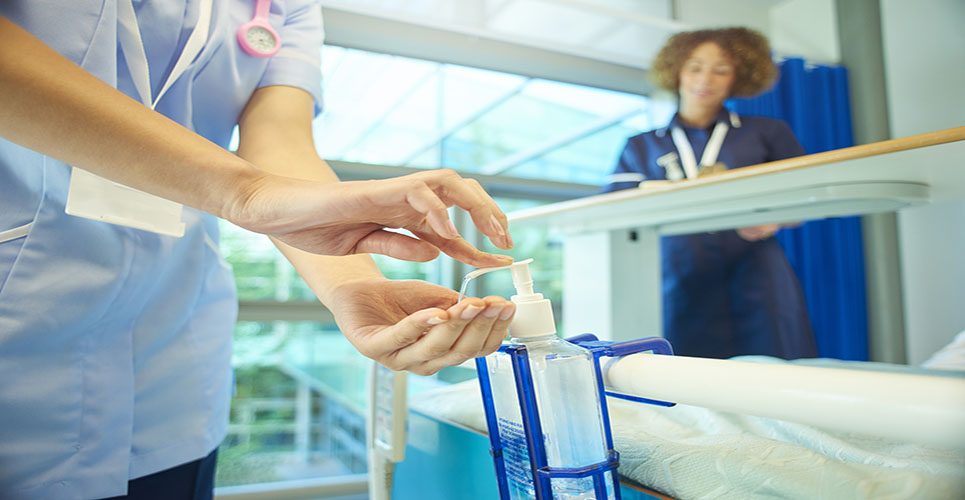teaser
Georgina Froud
Communications Manager
Shield Medicare
Farnham
UK
E:[email protected]
This article highlights the range of items passed into the cleanroom or critical areas that pose a contamination threat and might be overlooked. In addition, it suggests techniques for minimising risk.
Disinfecting all items passed into the cleanroom
Hospital pharmacy technicians are aware of the need for items such as syringes and needles to be supplied sterile, and of the need to remove surface contamination before they are passed into the cleanroom. Ideally, all items passed into a Grade A or B environment should be irradiated, autoclaved or gas-sterilised to ensure sterility. However, many commonly used items are often not supplied sterile or are not suitably packaged for the cleanroom. Thus, these items need extra consideration (see Box 1).
[[HPE22_box1_49]]
The need for better transfer disinfection procedures has been highlighted by studies investigating the bioburden of items passed into pharmaceutical isolators.(2) This work showed that up to 60% of items ready for transfer were contaminated with bacteria before disinfection. More significantly, 40% of items were contaminated with bacterial spores that would not be removed by spraying with alcohol alone (see Table 1).
[[HPE22_table1_49]]
Using effective disinfection techniques
Work was carried out to assess the effectiveness of different liquid disinfection techniques (see Table 2).(2) Spraying and wiping was found to be the most effective method of transfer disinfection – especially against spores – because bacteria and spores can create a protective biofilm that needs to be removed by wiping so that the disinfectant comes into direct contact with the microorganisms.
[[HPE22_table2_50]]
It is essential that the disinfection procedure is effective for every single item, otherwise the entire exercise is pointless. Technicians need to be trained in the correct techniques and pay particular attention to the disinfection of items such as vials of drugs, especially where cytotoxic residues must also be considered.
Although shown to be the most effective method, spraying and wiping can be a time-consuming and tedious aspect of aseptic production; however, there can be no shortcuts, or the integrity of the unit will be compromised. For example, strips of syringes and needles are often wiped quickly on each side, but ought to be separated into individual items and wiped thoroughly, including underneath the opening, for the procedure to be effective.
An efficient solution is to use a sterile multipack that contains a quantity of sterile components, removing the need to spray and wipe individual items. The smooth polythene bag of a sterile multipack is quick and easy to wipe and does not support the presence of bacteria in the same way as paper. The double-bagged format is compatible with transfer protocols.
Sterile multipacks containing quantities of common cleanroom components (syringes, needles, syringe caps, chemo dispense pins, reconstitution devices, intermittent injection ports, additive caps, fluid dispensing connectors, combi stoppers, transfer devices, chemotherapy spill mats, marker pens, cleanroom paper, sharps bins, polythene bags and disposable aprons) are available.
Avoiding paper in the cleanroom
Even if a hospital cleanroom adopts good spray and wipe protocols, there are risks of high initial bioburden from certain types of packaging. For example, the paper in paper-backed items is porous, so it is easily contaminated with bacteria or spores and the uneven surface makes wiping less effective. Coupled with the fact that alcohol does not kill spores, paper packaging poses a significant contamination threat.
The solution is to select items with cleanroom-compatible polythene packaging wherever possible. The smooth polythene is easy to wipe and does not support the presence of bacteria or spores in the same way as paper.
Paper packaging also needs to be reduced within a cleanroom environment because it carries a high particulate load. The number of particles shed is so great that if you open 50 paper-backed syringes over a dark surface you can easily see the shed particles on the surface. By contrast, polythene packaging virtually eliminates the shedding of particles on opening.In Table 3, we inventory a list of common problems and solutions for transfer of everyday items.
[[HPE22_table3_51]]
References
- Eudralex. Vol 4 Good Manufacturing Practice, Annexe 1. Manufacture of Sterile Medicinal Products Rev 2003.
- Cockroft MG, Hepworth D, Rhodes JC, et al. Validation of liquid disinfection techniques for transfer of components into hospital pharmacy clean rooms. Hosp Pharm 2001;8:226-32.
- Salvage B. Contamination control at your fingertips. Pharmaceutical Manufacturing International, 1999.

